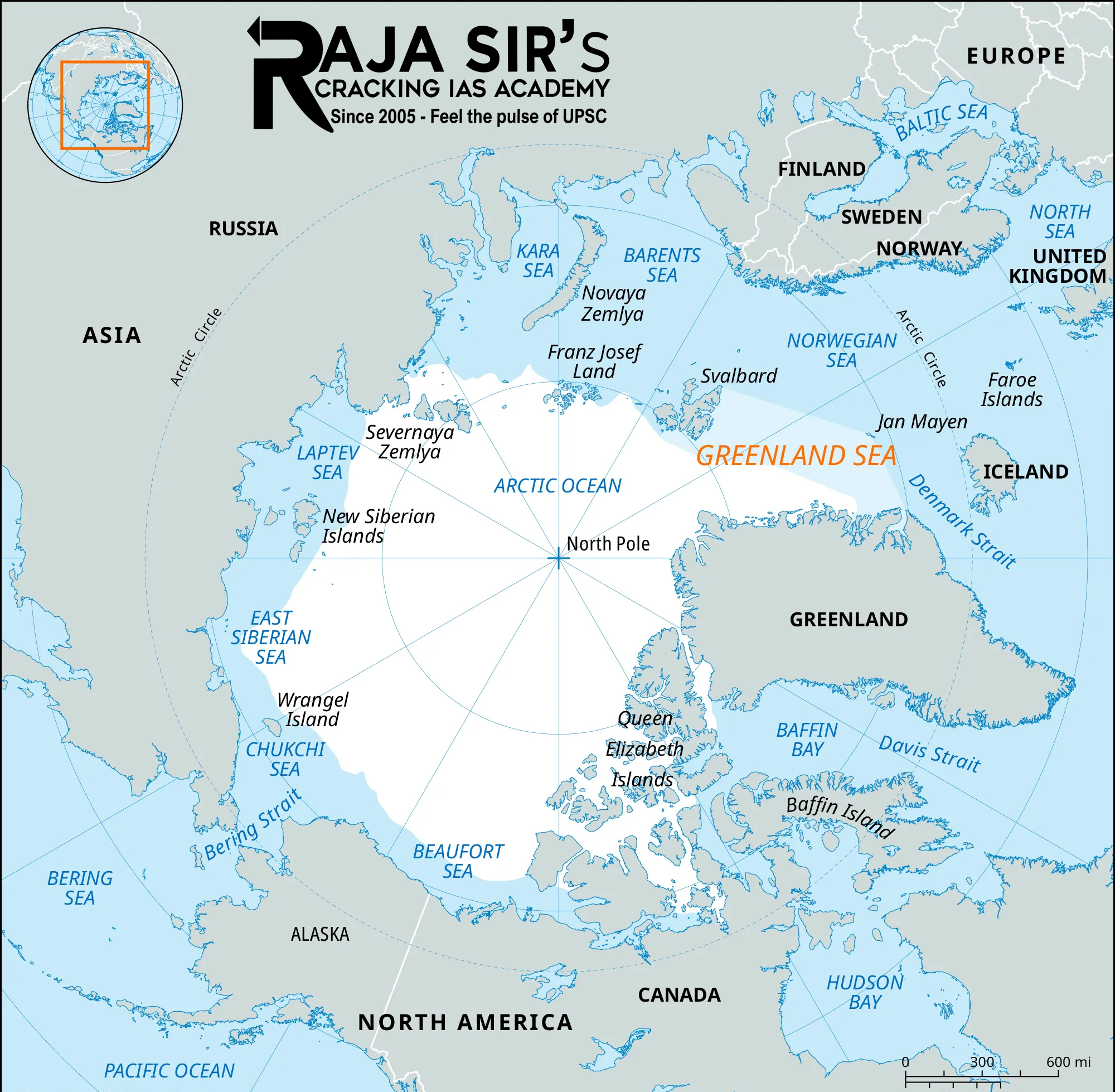- Home
- Prelims
- Mains
- Current Affairs
- Study Materials
- Test Series
Greenland: The island of US interest
- Greenland is the world’s largest island with a population of 57,000. Almost 80% of it is covered by the ice cap and glaciers.
- It is surrounded by the Atlantic Ocean on one side and the Arctic Ocean on the other.
- It is the location of the northernmost point of land in the world— Kaffeklubben Island.
- The climate of Greenland is Arctic, modified only by the slight influence of the Gulf Stream in the south-west.
 Political situation in Greenland
Political situation in Greenland
- The Arctic island is an autonomous territory controlled by Denmark. The citizens of Greenland are European Union citizens.
- It was colonised by the Danes in the 18th century and has been associated with Europe.
- Geographically, it is part of the North American continent and closer to the U.S. than Denmark.
- Most of Greenland’s foreign, monetary and military policies are dictated by Denmark. Greenland has a Parliament which deals with domestic affairs such as business taxes, immigration, and mining.
- The calls for complete independence from Denmark have been rising in the island, especially after the contraceptive scandal between the 1960s and 1990s came to light.
- Almost 4,500 Inuit women (the indigenous people of Greenland) were forced to wear a contraceptive coil without their consent.
Significance of Greenland
- Global aspirations:
- New Shipping Routes:
- Due to climate change and global warming, glaciers and ice sheets in the Arctic Sea are melting, leading to potentially new shipping routes, which could greatly enhance trade.
- Russia and China have already agreed to develop new trading routes in the Arctic waters. The countries have developed a subcommittee for cooperation on the northern sea route, which spans 5,600 km from the Barents Sea near Scandinavia to the Bering Strait near Alaska.
- Critical Minerals:
- The island is also rich in minerals. As per a 2025 survey, 25 of 34 critical raw materials, which are used in EVs and batteries, were found in Greenland.
- The melting of almost 28,000 square km of Greenland’s ice sheets makes drilling for oil, gas and other critical raw materials easier.
- Greenland has not given out certain mining leases since 2021, fearing the possible environmental and ecological harms to the region.
- U.S. aspirations in Greenland:
- Historic:
- During the Second World War, the U.S. briefly occupied the region and defended it, when Denmark was under siege by Nazi Germany.
- Noting the region’s geopolitical importance, the U.S. in 1946, after the War, had offered to buy it from Denmark.
- Denmark rejected the offer and ever since Greenland has been a part of the Danish realm with home rule granted to the island in 1979.
- Contemporary:
- Greenland is important for the U.S. security. The U.S. runs and operates an air base on the island.
- With the threat of Russia-China cooperation in the region, annexing Greenland could give the U.S. significant control over the area, letting it decide who gets to run and operate in these strategic waters.
- Concerns:
- Trump’s calls to buy/annex Greenland breaks the first and fundamental rule of the UN Charter: recognising the sovereignty of nations.
- With respect to Greenland, the U.S. is going against the NATO agreement as well.
- Further, Arctic waters are a global common under the UN Convention on the Law of the Sea (UNCLOS).









 Latest News
Latest News
 General Studies
General Studies